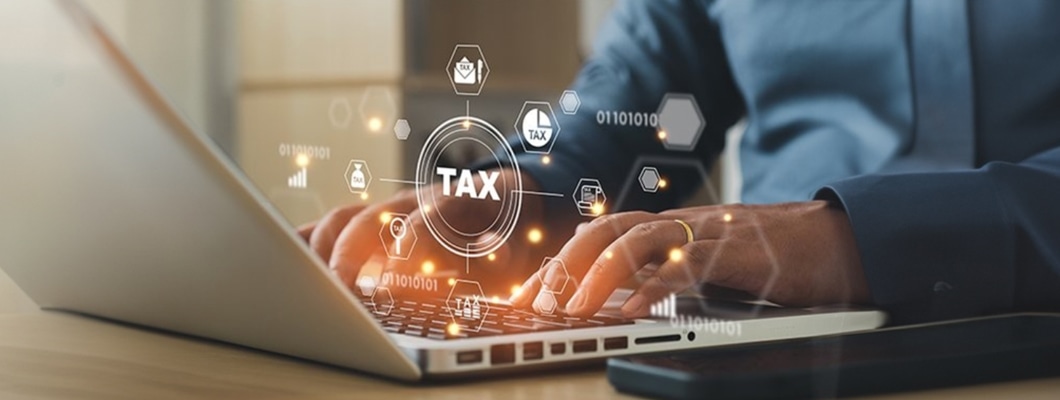
Is CBDT Tax Direct or Indirect?
Posted on Saturday, August 5th, 2023 | By IndusInd Bank
The Central Board of Direct Taxes (CBDT) is a statutory body under the Department of Revenue in the Ministry of Finance. CBDT oversees the complete administration of direct taxes in India through the Income Tax Department. Pay your direct taxes to CBDT with IndusInd Bank’s smooth payment process.
Central and State Governments in India collect several types of taxes from eligible citizens. Put simply, a tax is a mandatory fee levied by a government to collect revenue from individuals and business entities. Taxes form a major part of any government’s revenue, which is used to provide infrastructure and services to the nation. Failing to deposit tax as mandated by a country’s law can attract serious penalties. Thus, as a responsible citizen, it is imperative to pay your taxes.
Governments collect taxes in many forms; majorly, taxation can be divided into two categories – direct and indirect taxes, depending on how they are collected.
In this article, we take you through both direct (CBDT) taxes as well as indirect taxes.
What is CBDT and CBDT taxes?
The Central Board of Direct Taxes (CBDT) is a statutory body under the Department of Revenue in the Ministry of Finance. CBDT oversees the complete administration of direct taxes in India through the Income Tax Department. Hence, any policies or planning regarding direct taxes falls under the ambit of the CBDT.
CBDT taxes or direct taxes include income tax, capital gains tax, etc. levied on individuals and businesses.
What Is Direct Tax?
Direct taxes are levied by the government on the income or profits of citizens. The tax liability cannot be transferred to another entity or person and must be borne by the individual taxpayer alone. Direct taxes are collected and administered by the CBDT. Taxes that fall in this category include:
1. Income Tax
This direct tax is calculated based on the income or profits of an individual or entity during a financial year. The payable amount depends on the income tax slab set by the Income Tax Department. For FY23-24, individuals with an income of up to Rs. 3 lakhs per annum are exempt from income tax.
2. Capital Gains Tax
This tax is levied on profits from the sale of a ‘capital asset’ in the year of the sale. Capital assets can include residential property, land, vehicles, machinery, precious metals, etc.
These capital gains can be Short-Term Capital Gains (STCG) if you sell a capital asset after holding it for less than one year or Long-Term Capital Gains (LTCG) after holding it for over a year.
3. Securities Transaction Tax
Individuals involved in security trading must pay this tax, irrespective of profit made.
What Is Indirect Tax?
Indirect taxes are levied on the production and consumption of goods and services. Unlike a direct tax, the liability of paying an indirect tax can be transferred. For instance, a wholesaler passes tax on to a retailer, who then passes it on to the end customer. Indirect taxes are collected and administered by the CBIC (Central Board of Indirect Taxes and Customs) through intermediaries. Indirect taxes in India include Goods and Service Tax (GST), Customs Duty, Sales Tax, etc.
How can you pay Direct Tax with IndusInd Bank?
IndusInd Bank is now integrated with the lncome Tax Department’s ‘TIN 2.0’ platform. You can now pay your Direct Taxes in a fast, seamless and convenient manner through the Bank’s Retail or Corporate Net Banking platform or at any IndusInd Bank branch using Cash, Cheque or Demand Draft.
For payment of Direct tax,
- Tax payer need to visit the Income Tax portal and log in with his/her user credentials
- Income Tax portal also has a pre-login section which can be accessed by tax payer by entering their PAN/TAN along with Mobile Number and OTP. However, through this section, only selected types of Direct Tax transactions can be initiated
- Post successful login, Tax payer will select e-Pay Tax under the e-File menu and click on the new payment tab
- Tax payer will select the Category of payment which he/she wants to pay, select Assessment Year and Type of Payment (Minor Head) and enter the Tax amount breakup as per his/her payment liability
- Tax payer will then need to select the mode of payment in which he/she wants to pay tax liability and generate the challan
- Once challan is generated, a Tax payer can pay the Directtax through the following modes offered by IndusInd Bank:
- Internet Banking – Retail Channel (IndusNet)
- Internet Banking – Corporate Channel (IndusDIRECT)
- Pay at Bank Counter – pay at all IndusInd Bank branches (Click here to learn more about paying direct taxes with IndusInd Bank)
Disclaimer: The information provided in this article is generic in nature and for informational purposes only. It is not a substitute for specific advice in your own circumstances. Hence, you are advised to consult your financial advisor before making any financial decision. IndusInd Bank Limited (IBL) does not influence the views of the author in any way. IBL and the author shall not be responsible for any direct/indirect loss or liability incurred by the reader for taking any financial decisions based on the contents and information.



 Offers
Offers Rates
Rates Debit Card Related
Debit Card Related Credit Card Related
Credit Card Related Manage Mandate(s)
Manage Mandate(s) Get Mini Statement
Get Mini Statement
 categories
categories Bloggers
Bloggers Blog collection
Blog collection Press Release
Press Release
